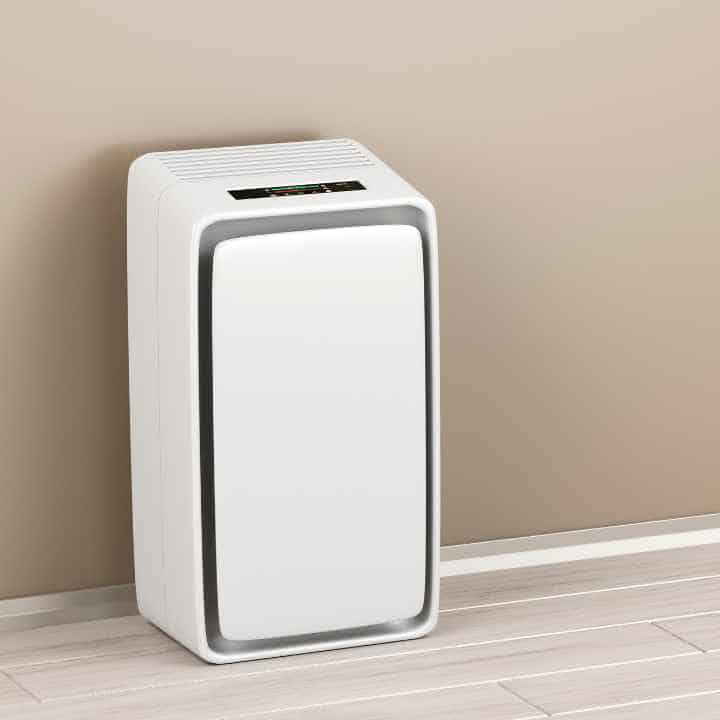What does ozone smell like? Many people might say that it smells earthy, metallic, or even slightly sweet.
Ozone has a distinct smell that is often described as being similar to chlorine, although it is much less pungent. Some people also say that ozone smells a bit like fresh rain.
What Does Ozone Smell Like?
Ozone is a molecule that consists of three oxygen atoms. It is found in high concentrations in the Earth’s upper atmosphere, where it protects us from the sun’s harmful ultraviolet radiation.
Ozone can also be found at lower levels in the atmosphere, and this is where it gets its distinctive smell.

When ozone molecules interact with other chemicals, they can produce a variety of odors, ranging from sweet to chlorine-like.
However, the most common odor associated with ozone is a “bleachy” or “electric” smell. This odor is usually strongest when ozone levels are high, such as on hot summer days.
Therefore, if you notice a strong ozone smell, it may be an indication that there are high levels of this gas in the air.
What are the health effects of ozone?
Ozone is a gas that is found in the Earth’s upper atmosphere. It helps to protect us from the sun’s ultraviolet rays.
Who is Most at Risk From Exposure to Ozone?
However, ozone can also be harmful to our health. When ozone levels are high, it can cause several respiratory problems, including coughing, chest pain, and shortness of breath.
Additionally, ozone can aggravate asthma and other lung conditions. People with heart disease may also be at risk for more serious health problems when exposed to high levels of ozone.
Therefore, it is important to monitor ozone levels and take steps to avoid exposure on days when air quality is poor.
What Are The Symptoms of Ozone Exposure?
One of the most important things to remember about ozone exposure is that it is a cumulative effect.
This means that the symptoms might not be immediately apparent, but can build up over time. Short-term exposure to ozone can irritate the eyes, nose, and throat.
It can also cause coughing and nausea. In some cases, it can also lead to difficulty breathing. Long-term exposure to ozone can exacerbate respiratory problems such as asthma and emphysema.
It can also lead to permanent damage to the lungs. Therefore, it is important to be aware of the symptoms of ozone exposure and to take steps to avoid prolonged exposure if possible.
How Can You Reduce Exposure to Ozone?
Air purifiers are becoming increasingly popular, as people look for ways to improve the quality of the air they breathe.
However, many air purifiers generate ozone as a by-product of their filtration process. While ozone can be effective at removing airborne contaminants, it can also be harmful to human health.
Studies have linked exposure to high levels of ozone to a variety of respiratory problems, including asthma and bronchitis.
Thankfully, there are a few things you can do to reduce your exposure to ozone from air purifiers.
First, make sure that the purifier you choose does not generate ozone. Many newer models use ultraviolet light or activated carbon filters that do not produce ozone.
Second, if your purifier does generate ozone, make sure to use it in a well-ventilated room. Third, avoid using your purifier for long periods, and take breaks every few hours to let the room air out.
What is Ozone?
Ozone is a molecule made up of three oxygen atoms. It is found in the Earth’s upper atmosphere, and its molecules absorb ultraviolet radiation from the sun.
This radiation is harmful to living things, so ozone protects us from it. Ozone also plays an important role in the Earth’s climate.
When sunlight hits the Earth’s atmosphere, some of it is reflected in space. However, some of the sunlight is absorbed by greenhouse gases like carbon dioxide and water vapor.
These gases then release the heat energy back into the atmosphere. Ozone helps to trap this heat energy, making the Earth’s climate warm enough for life to exist.
Ozone Layer in The Stratosphere
The stratosphere is the second layer of Earth’s atmosphere and extends from about 10 kilometers to 50 kilometers above the surface.
This layer is where most of the ozone in the atmosphere resides. Ozone is a molecule consisting of three oxygen atoms (O3) that absorb ultraviolet (UV) radiation from the Sun.
This radiation is harmful to living things, so the ozone layer acts as a shield, protecting life on Earth from its harmful effects.
The stratosphere also contains the jet stream, which helps to circulate air around the planet. When ozone levels in the stratosphere decrease, it can hurt the jet stream and cause weather patterns to become more extreme.
Additionally, lower levels of ozone can allow more UV radiation to reach the surface of the Earth, increasing the risk of skin cancer and other health problems.
Ozone Layer in The Troposphere
Ozone is a gas that is found in the Earth’s atmosphere. It is made up of three oxygen atoms (03).
Ozone occurs naturally in the Earth’s upper atmosphere, where it helps to protect us from the sun’s harmful ultraviolet (UV) rays.
[elementor-template id=”2495″]
However, ozone also exists in the lower atmosphere or troposphere. There, it is considered a pollutant and can be harmful to human health.
Tropospheric ozone is created when pollutants from cars and factories react with sunlight. This process is known as photochemical smog.
Tropospheric ozone can cause a variety of respiratory problems, including asthma and bronchitis.
Conclusion
Air purifiers can be harmful to human health if they generate ozone. Ozone can cause respiratory problems, such as asthma and bronchitis.
It can also damage plants and reduce crop yields. To reduce your exposure to ozone, make sure to choose a purifier that does not generate ozone, use it in a well-ventilated room, and take breaks every few hours.